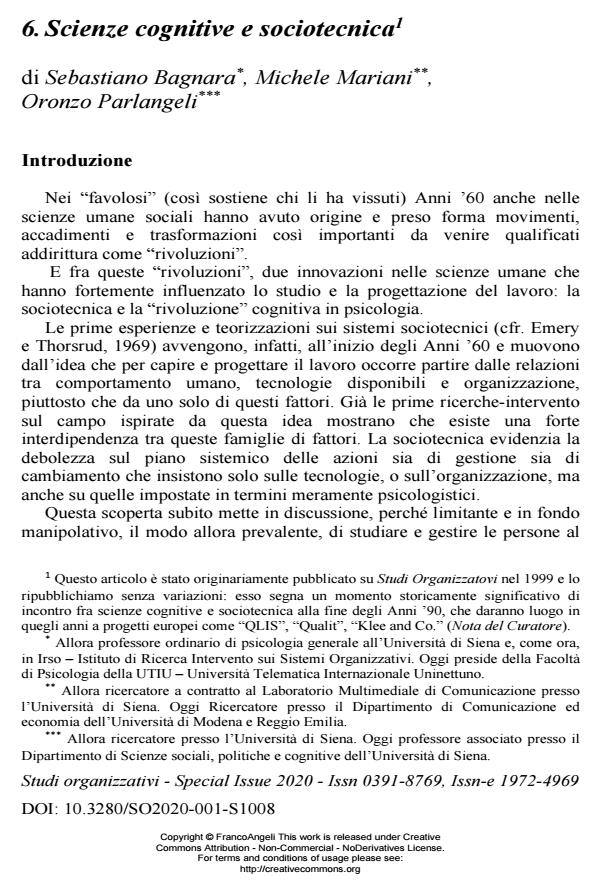Scienze cognitive e sociotecnica
Titolo Rivista STUDI ORGANIZZATIVI
Autori/Curatori Sebastiano Bagnara, Michele Mariani, Oronzo Parlangeli
Anno di pubblicazione 2020 Fascicolo 2020/suppl. 1
Lingua Italiano Numero pagine 16 P. 126-141 Dimensione file 267 KB
DOI 10.3280/SO2020-001-S1008
Il DOI è il codice a barre della proprietà intellettuale: per saperne di più
clicca qui

FrancoAngeli è membro della Publishers International Linking Association, Inc (PILA)associazione indipendente e non profit per facilitare (attraverso i servizi tecnologici implementati da CrossRef.org) l’accesso degli studiosi ai contenuti digitali nelle pubblicazioni professionali e scientifiche
Sebastiano Bagnara, Michele Mariani, Oronzo Parlangeli, Scienze cognitive e sociotecnica in "STUDI ORGANIZZATIVI " suppl. 1/2020, pp 126-141, DOI: 10.3280/SO2020-001-S1008